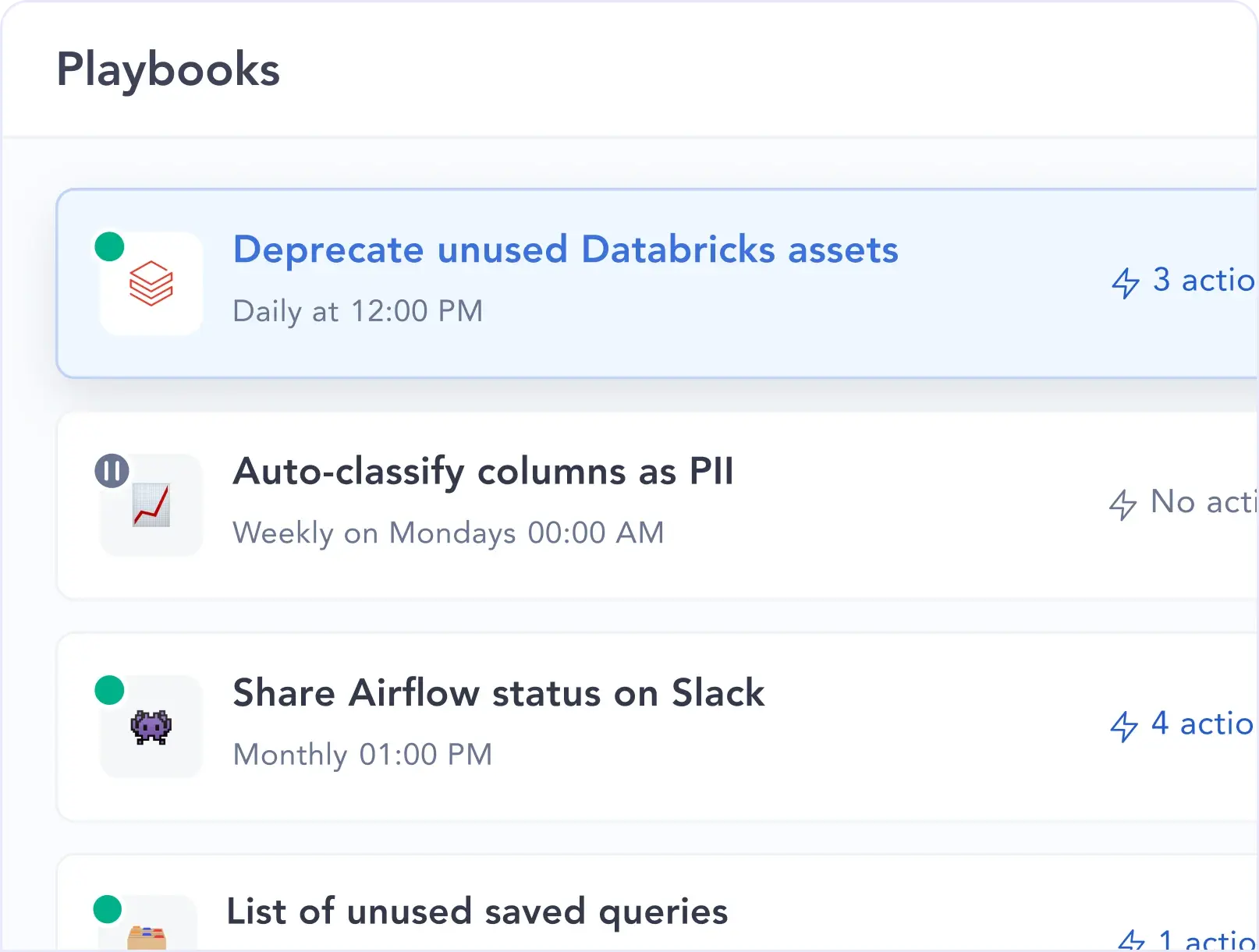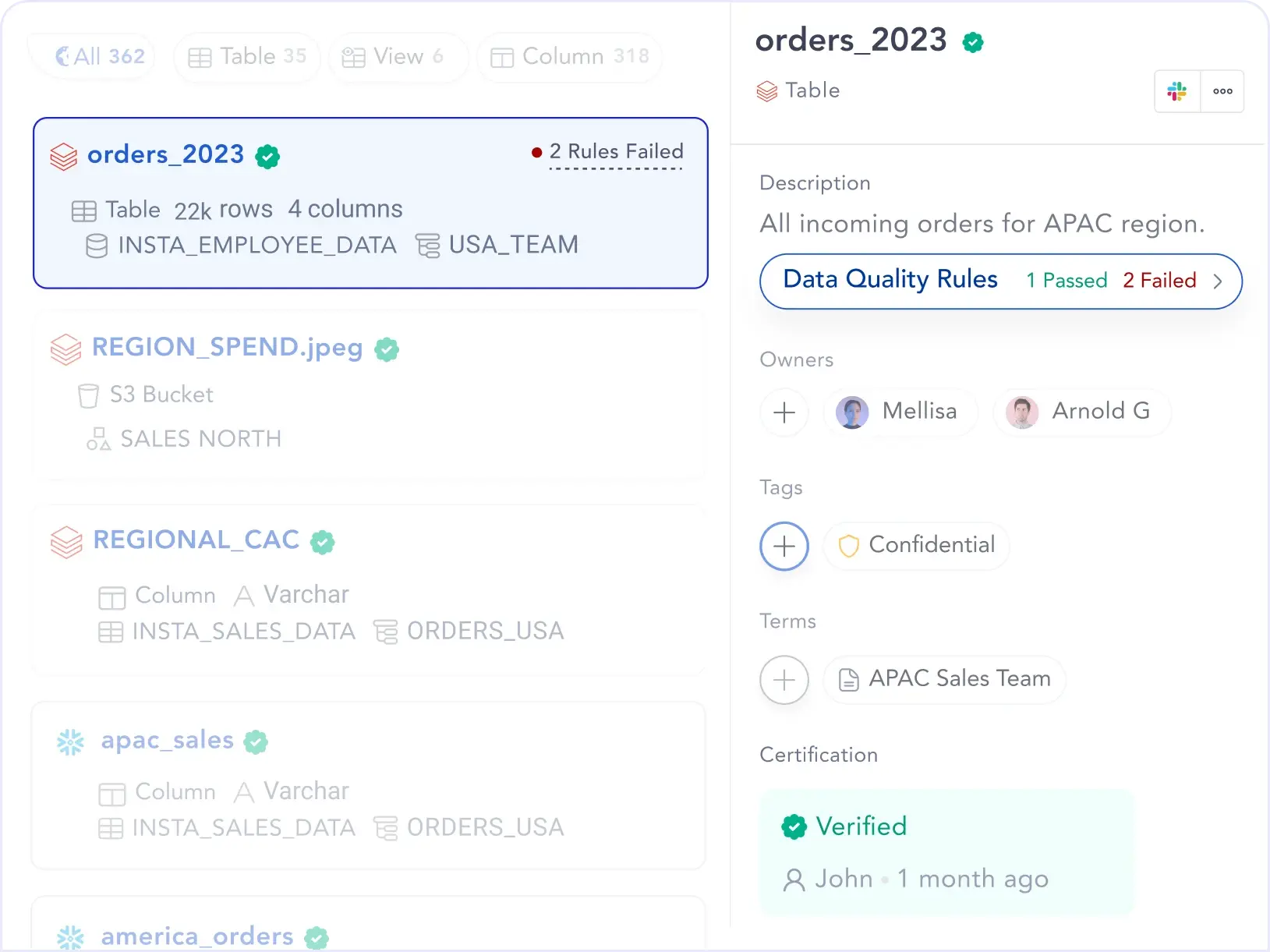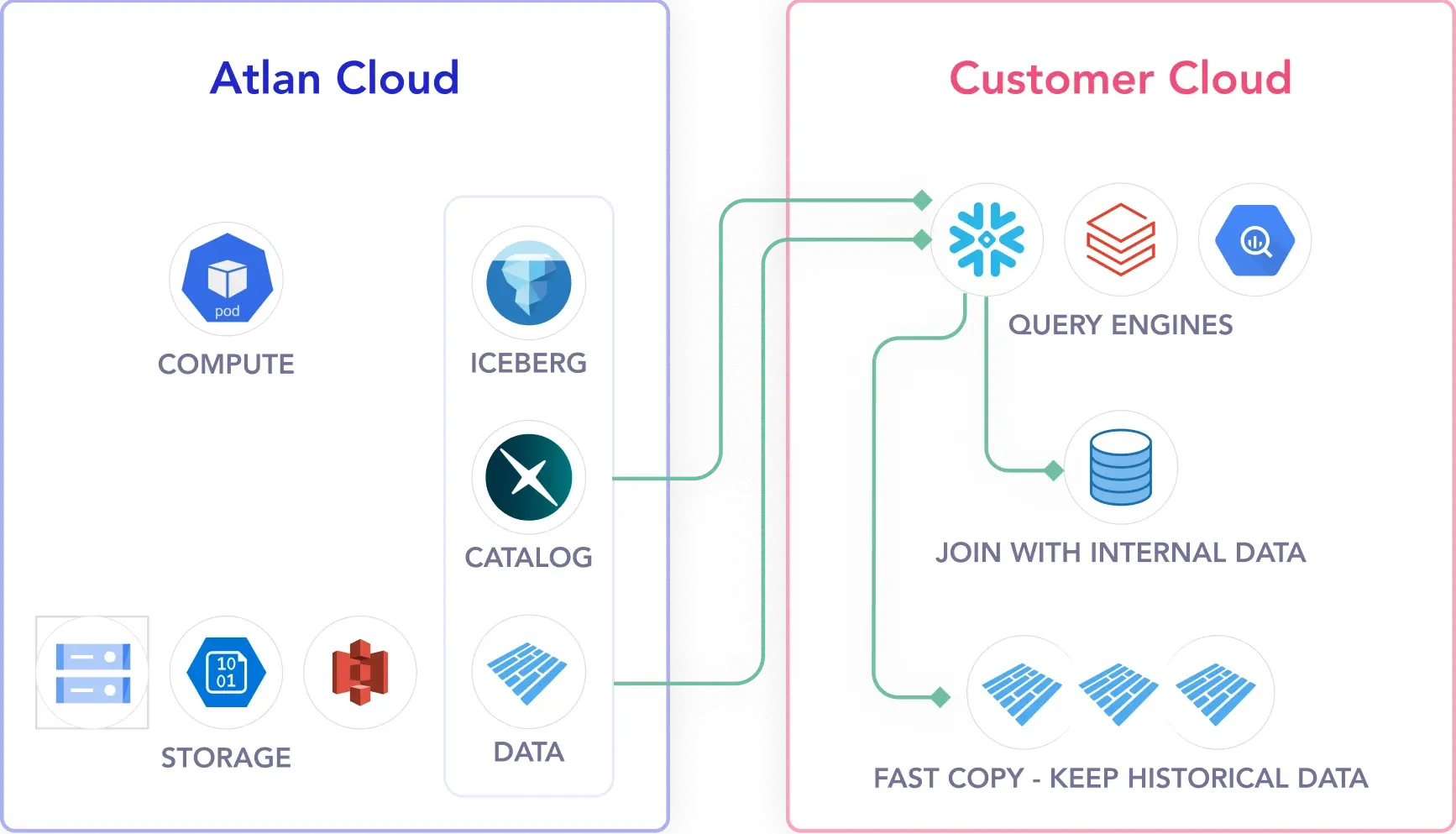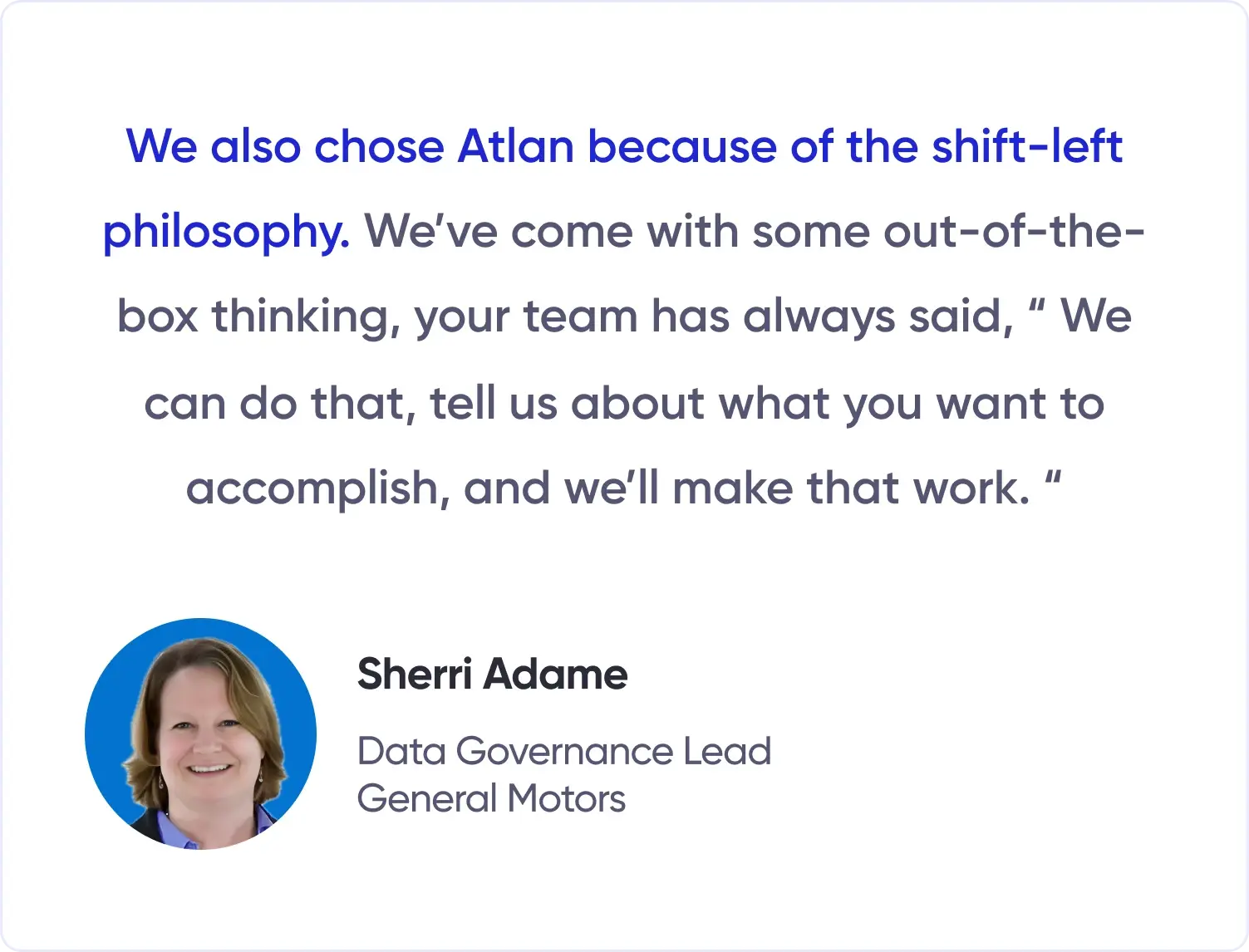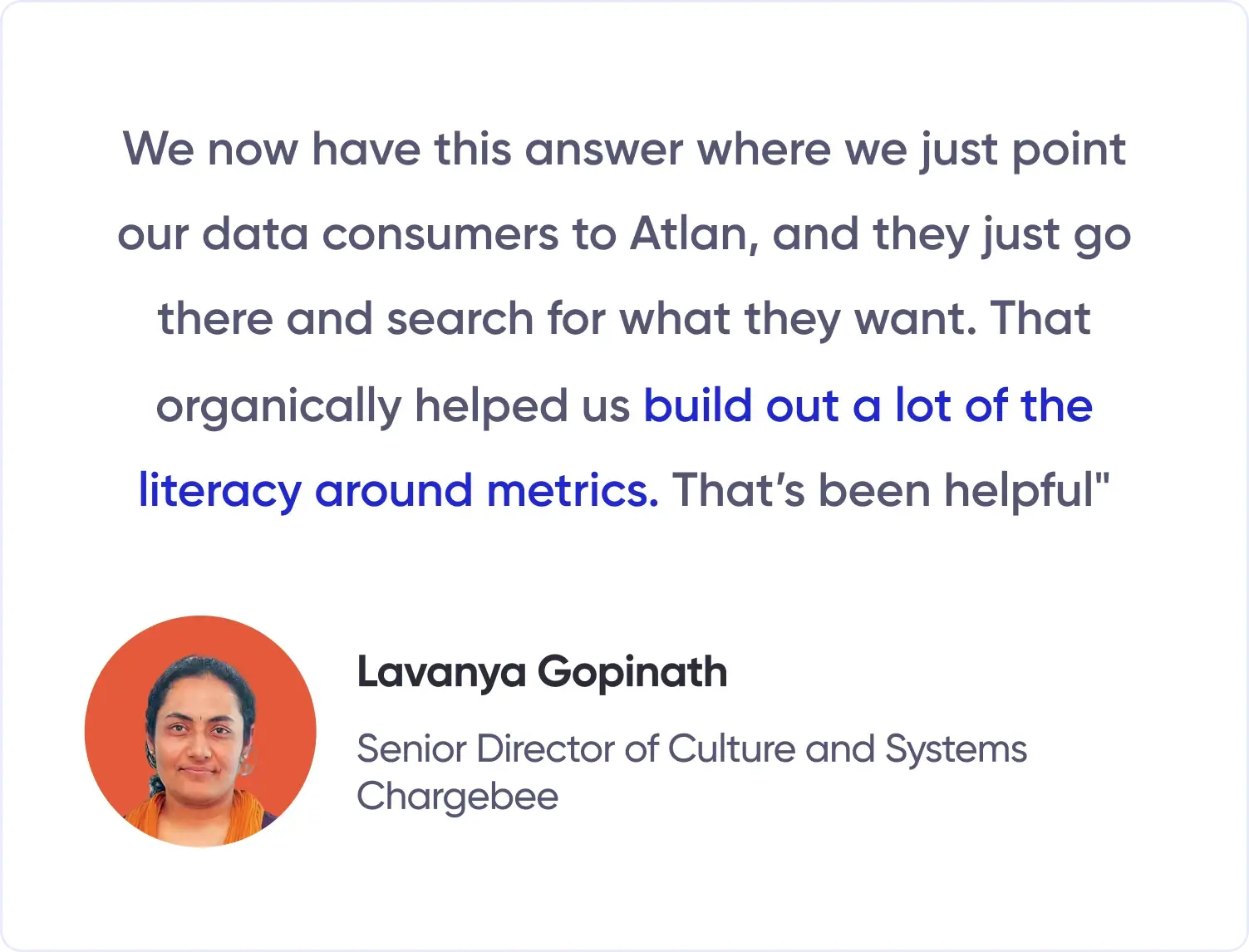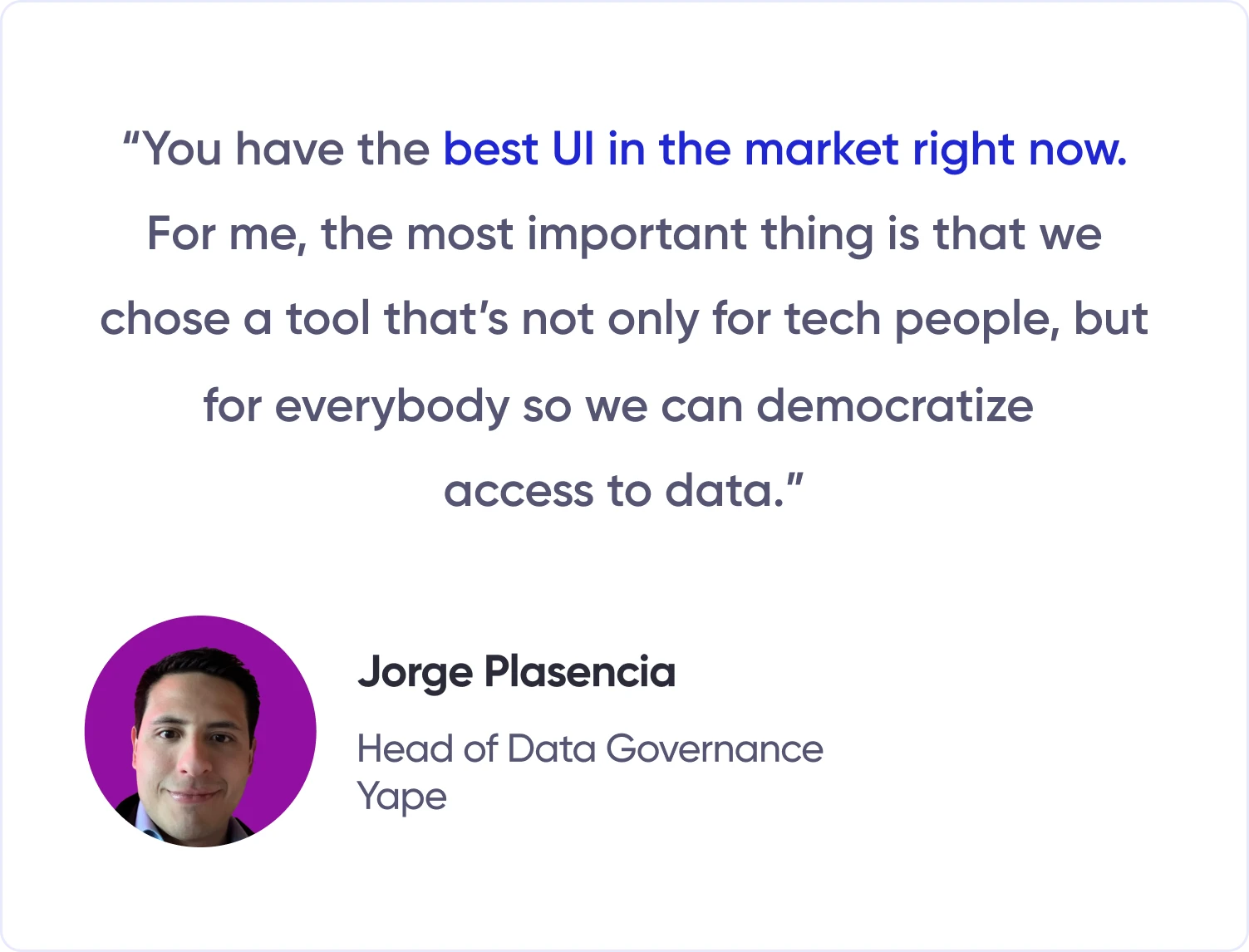Unity Catalog
+ Atlan
Unity Catalog provides the governance foundation in Databricks. Atlan extends that trust, context, and control across the entire stack from source DBs to BI tools for both technical and business teams.

“If we didn’t have AI in our arsenal, we could find ourselves at a competitive disadvantage. Unity Catalog worked out of the box for us… and Atlan gave us visibility from the cloud all the way back to our on-prem.”
Brian Ames
Head of AI Center

Atlan adds capabilities, extends them to more systems and user types
Unity Catalog provides governance foundation within Databricks. Atlan extends trust, context, and control across your entire data stack for comprehensive governance.
Enable federated, interoperable, multi-platform governance
Unity Catalog governs Databricks, and Atlan extends those controls across cloud platforms, BI tools, and SaaS applications for consistent governance everywhere.
Make data usable for everyone
Unity Catalog serves technical users, while Atlan brings a consumer-grade experience to every persona—engineers, analysts, stewards, business users, and AI agents.
Trace the end-to-end data journey
Unity Catalog delivers lineage in Databricks, and Atlan extends that visibility across sources, transformations, and dashboards for column-level, end-to-end trust.
Advanced governance for enterprise needs
Unity Catalog offers tagging and glossaries, and Atlan adds workflows, a no-code Policy Center, and automated playbooks to power enterprise-wide governance.
What Unity Catalog and Atlan deliver together,
at a glance
| Capability | Unity Catalog |  | Unity Catalog + Atlan |
|---|---|---|---|
| Discovery | Discovery across Databricks and federated sources with a technical-first interface | All systems with persona-based interfaces | Complete discovery across technical and business users |
| Lineage | Column-level lineage within Databricks workspaces | Column-level end-to-end across all systems | Full data journey visibility with impact analysis |
| Governance | Access control and masking optimized for Delta Lake | Cross-system policy orchestration with workflows | Consistent governance enforcement across systems |
| User Adoption | Optimized for data engineers and technical teams | All organizational personas including business users | Organization-wide data culture transformation |
| Data Products | Foundational marketplace capabilities within Databricks | Business-ready products grouped by domains | Self-service data consumption at scale |
| Data Quality | Monitoring capabilities within Databricks | No-code rules with best-of-breed tool integration | Comprehensive quality management |
| AI Governance | Databricks ML asset management | AI asset management across all platforms | Complete AI governance lifecycle |
| Architecture | Platform-native with Databricks optimization | Open, interoperable metadata lakehouse | Future-proof flexibility with current optimization |
Why is Atlan the best universal catalog
for Unity?
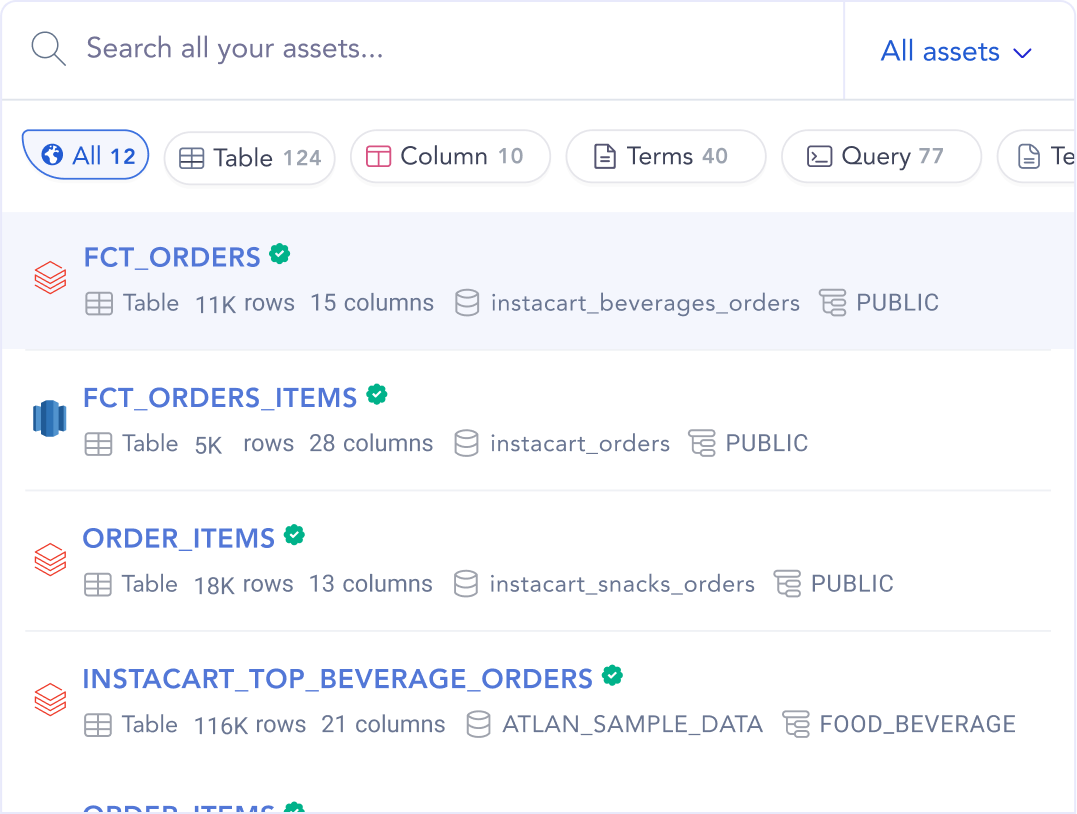
What Databricks customers achieve
with Unity Catalog and Atlan
Build a future-ready data estate
Combine Unity Catalog and Atlan to bring consistent controls and end-to-end visibility to your entire data estate.























